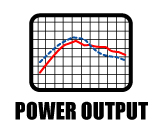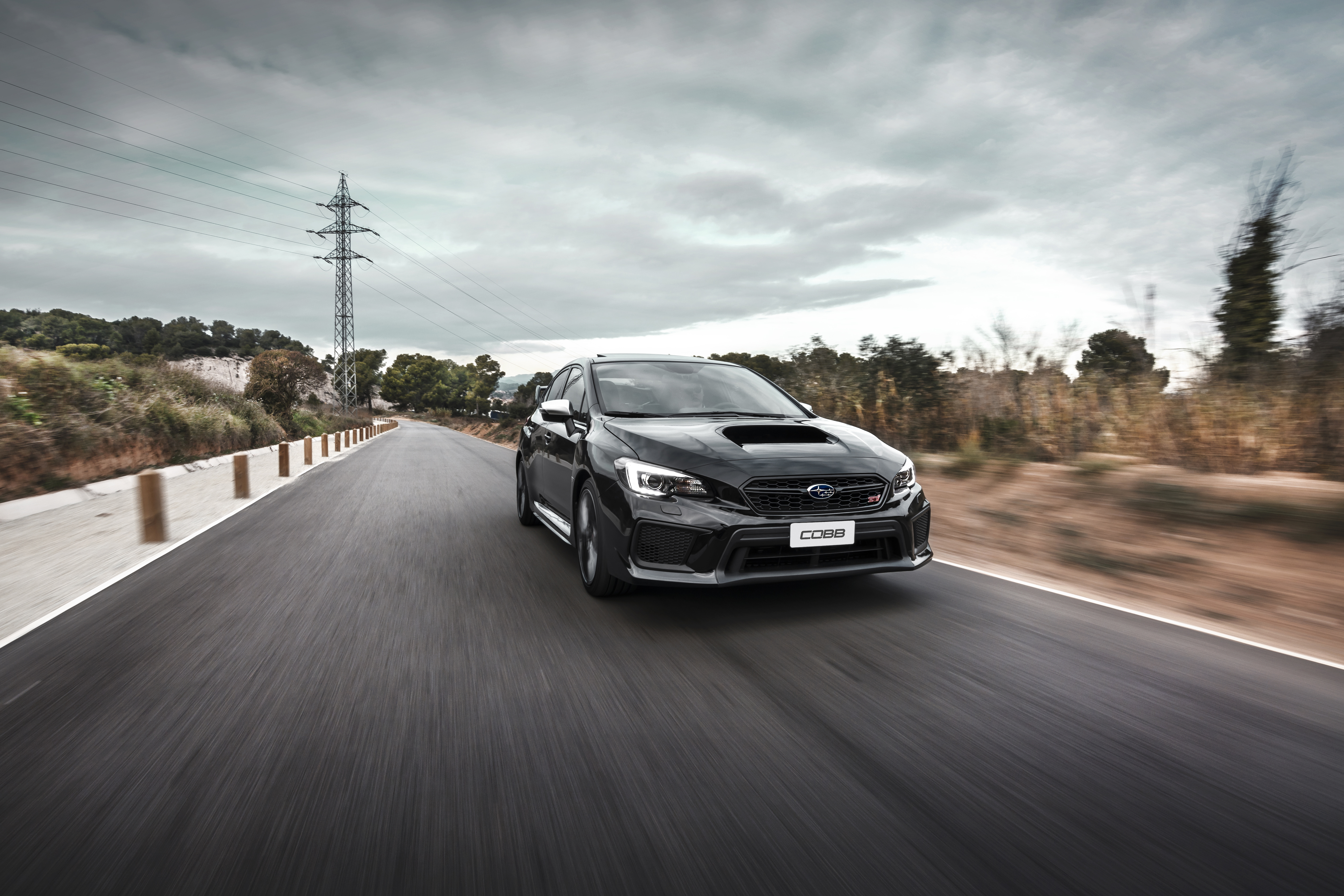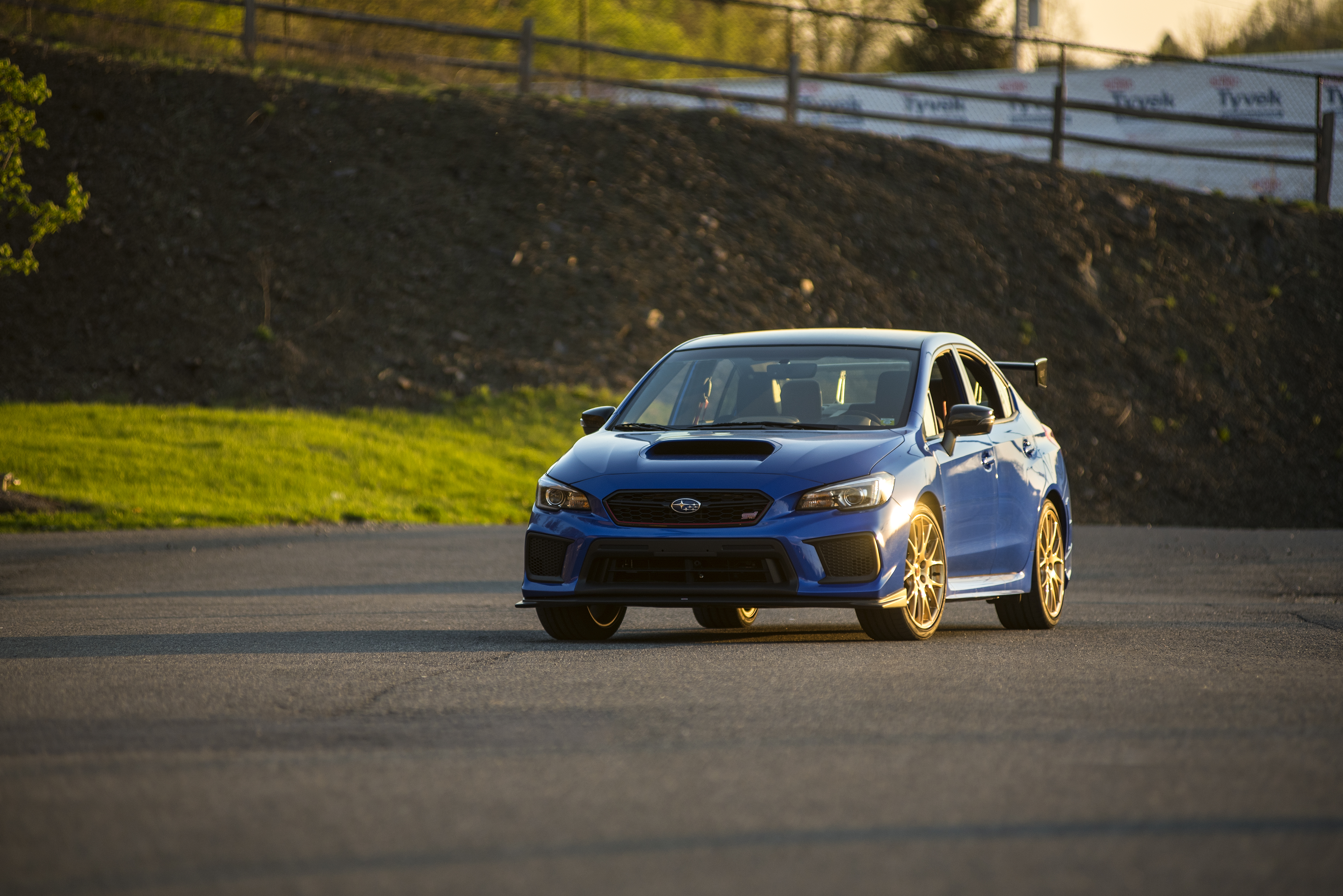Supported Vehicles:
Model year 2015-2020 STI (North American), 2015-2019 (ADM Spec).
*To confirm your model year, you can refer to the tenth value in the VIN number on the vehicle. For model year 2001-2009, the 10th value in the VIN will be the last digit of the model year. For model year 2010-2019, the 10th value in the VIN will be A-K, starting with 2010, ending with 2019.
Current Map Revision:
North American 2015-2016 STI
North American 2017 STI
North American 2018 STI
North American 2018 STI Type RA, 2019-2020 STI
ADM 2015-2017 STI
ADM 2018-2019 STI
Stage1 v350 Boost Select
Stage1+SF v350 Boost Select
Stage2 v350 Boost Select
Stage3 1050x v100
Stage1 v350 Boost Select
Stage1+SF v350 Boost Select
Stage2 v350 Boost Select
Stage3 1050x v100
Stage1 v350 Boost Select
Stage1+SF v350 Boost Select
Stage2 v350 Boost Select
Stage3 1050x v350
Stage1 v350 Boost Select
Stage1+SF v352 Boost Select
Stage2 v352 Boost Select
Stage3 1050x v350 Boost Select
- Stage1 v355 Boost Select
Stage1 v350 Boost Select
Stage1+SF v350 Boost Select
Stage2 v350 Boost Select
Stage1 v350 Boost Select
Stage1+SF v350 Boost Select
Stage2 v350 Boost Select
Accessport Firmware:
- AP3-SUB-004: 1.7.3.1-16531 or greater
- AP3-AU-SUB-004: 1.7.3.0-15927 or greater
Fuel Requirements:Each map lists the minimum required octane. A higher octane fuel can be used safely on a map designed for lower octane. DO NOT use maps designed for higher octane with lower octane fuels. Top Tier gasoline should be used where available.
- Maps designated with "93" are for use with 93 and 94 octane/98 RON fuel or better.
- Maps designated with "91" are for use with 91 and 92 octane/95 RON fuel or better.
- Maps designated with "ACN91" are for use with 91 octane fuel found in Arizona, California, and Nevada or better. And additionally for those in Canada, for use with 94 octane Fuel at a minimum.
2015 - 2018 STI (all supported)
15-18 STI Stage 1 & 2
Stock HP TQ
Stage1 HP TQ
Stage1+Intake HP TQ
Stage2 HP TQ
Peak Gains
Maximum Gains
Stage1 93
+3% HP / +20% TQ
+22% HP at 4400 RPM / +25% TQ at 3800 RPM
Stage1+SF 93
+7% HP / +23% TQ
+24% HP at 4400 RPM / +28% TQ at 3800 RPM
Stage2 93
+3.5% HP / +29% TQ
+29% HP at 4400 RPM / +34% TQ at 3800 RPM
| Info |
|---|
Results may vary. Generally speaking, the 91 (95 RON) and ACN91 calibrations run slightly lower boost, have a richer fuel curve, and a less aggressive ignition advance map to help compensate for 91 octane (95 RON) fuel; Arizona, California, and Nevada 91 octane fuel; and/or less than ideal atmospheric conditions. The maps designed for 93 octane (98 RON) are the most aggressive. |
Stage 1
- Intake Requirements: Stock airbox with stock air filter
- Exhaust Requirements: Stock exhaust or upgraded cat-back exhaust
- Boost Targets:
- ACN91 octane: ~17.0psi [S#] or 14.0psi [S] or ~8.0psi [I] peak boost pressure tapering down as you approach the 7000RPM redline, +/- 1.0psi.
- 91 octane (95 RON) Minimum: ~17.5psi [S#], ~14.5psi [S], or ~8.0psi [I] peak boost pressure tapering down as you approach the 7000RPM redline, +/- 1.0psi.
- 93 octane (98 RON) Minimum: ~18.0psi [S#], ~15.0psi [S], or ~8.0psi [I] peak boost pressure tapering down as you approach the 7000RPM redline, +/- 1.0psi.
Stage 1+SF
- Intake Requirements: COBB Tuning SF Intake and Airbox System
- Exhaust requirements: Stock exhaust or upgraded cat-back exhaust
- Boost Targets:
- ACN91 octane: ~17.0psi [S#] or 14.0psi [S] or ~8.0psi [I] peak boost pressure tapering down as you approach the 7000RPM redline, +/- 1.0psi.
- 91 octane (95 RON) Minimum: ~17.5psi [S#], ~14.5psi [S], or ~8.0psi [I] peak boost pressure tapering down as you approach the 7000RPM redline, +/- 1.0psi.
- 93 octane (98 RON) Minimum: ~18.0psi [S#], ~15.0psi [S], or ~8.0psi [I] peak boost pressure tapering down as you approach the 7000RPM redline, +/- 1.0psi.
Stage 2
- Intake Requirements: Stock airbox with stock air filter
- Exhaust requirements: Upgraded turbo-back exhaust with a high flow catalytic converter**
- Boost Targets:
- ACN91 octane: ~17.5psi [S#], ~15.0psi [S], or ~8.0psi [I] peak boost pressure tapering down as you approach the 7000RPM redline, +/- 1.0psi.
- 91 octane (95 RON) Minimum: ~18.0psi [S#], ~15.5psi [S], or ~8.0psi [I] peak boost pressure tapering down as you approach the 7000RPM redline, +/- 1.0psi.
- 93 octane (98 RON) Minimum: ~18.5psi [S#], ~16.0psi [S], or ~8.0psi [I] peak boost pressure tapering down as you approach the 7000RPM redline, +/- 1.0psi.
| Note |
|---|
|
** The Stage2 and Stage3 maps were developed using a COBB Tuning turbo-back exhaust system with a high-flow catalytic converter. An equivalent turbo-back exhaust system could also be used. If a lesser flowing turbo-back exhaust system is used then boost targets may not be achievable. These maps are NOT designed to be used with an aftermarket race downpipe that does not have a catalytic converter (i.e. catless). Doing so greatly increases the chance for boost spikes and boost creep.
*** Stage3 1050x mapping is not compatible with previous Stage3 kits which included 725cc injectors and did not include COBB rails and lines.
15-18 STI Stage3
Peak Gains
+20% HP / +33% TQ
| Info |
|---|
|
Stage3 1050x
- Intake Requirements: COBB Tuning SF Intake, COBB Turbo Inlet Hose
- Exhaust Requirements: Upgraded turbo-back exhaust**
- Fuel System Requirements: COBB FPR (fuel pressure regulator) and vacuum relocation, AEM 320 LPH fuel pump, COBB rails and line kit, COBB/ID 1050x injectors***
- Boost Targets:
- ACN91 octane: ~18.0psi [S#], ~16.0psi [S], or ~8.0psi [I] peak boost pressure tapering down as you approach the 7000RPM redline, +/- 1.0psi.
- 91 octane (95 RON) Minimum:~18.5psi [S#], ~16.5psi [S], or ~8.0psi [I] peak boost pressure tapering down as you approach the 7000RPM redline, +/- 1.0psi.
- 93 octane (98 RON) Minimum: ~19.0psi [S#], ~17.0psi [S], or ~8.0psi [I] peak boost pressure tapering down as you approach the 7000RPM redline, +/- 1.0psi
| Note |
|---|
|
** The Stage2 and Stage3 maps were developed using a COBB Tuning turbo-back exhaust system with a high-flow catalytic converter. An equivalent turbo-back exhaust system could also be used. If a lesser flowing turbo-back exhaust system is used then boost targets may not be achievable. These maps are NOT designed to be used with an aftermarket race downpipe that does not have a catalytic converter (i.e. catless). Doing so greatly increases the chance for boost spikes and boost creep.
*** Stage3 1050x mapping is not compatible with previous Stage3 kits which included 725cc injectors and did not include COBB rails and lines.
15-18 STI Non-Performance Maps:
Anti-Theft Mode
- Will not allow vehicle to start
Economy Mode, Intake+Economy Mode, Stage3 1050x Economy
- Boost Targets: Typically around 6psi - 12psi
- Rev Limiter: 5800 RPM
Valet Mode, Intake Valet Mode, Stage3 1050x Valet
- Boost Targets: Typically around 6psi - 12psi
- Rev Limiter: 3200-3800 RPM
2018 WRX STI Type RA (North American spec)
2019-2020 WRX STI (North American spec)
18 STI Type RA, 19-20 STI Stage1:
+24% HP / +24% TQ
*max gains are much larger past 6200 RPM
Stage 1
- Intake Requirements: Stock airbox with stock air filter
- Exhaust Requirements: Stock exhaust or upgraded cat-back exhaust
- Boost Targets:
- ACN91 octane: ~17.5psi [S#] or 14.0psi [S] or ~8.0psi [I] peak boost pressure tapering down as you approach the 7000RPM redline, +/- 1.0psi.
- 91 octane (95 RON) Minimum: ~18.0psi [S#], ~14.5psi [S], or ~8.0psi [I] peak boost pressure tapering down as you approach the 7000RPM redline, +/- 1.0psi.
- 93 octane (98 RON) Minimum: ~18.5psi [S#], ~15.0psi [S], or ~8.0psi [I] peak boost pressure tapering down as you approach the 7000RPM redline, +/- 1.0psi.
| Note |
|---|
|
| Info |
|---|
Results may vary. Generally speaking, the 91 (95 RON) and ACN91 calibrations run slightly lower boost, have a richer fuel curve, and a less aggressive ignition advance map to help compensate for 91 octane (95 RON) fuel; Arizona, California, and Nevada 91 octane fuel; and/or less than ideal atmospheric conditions. The maps designed for 93 octane (98 RON) are the most aggressive. |
-
18 STI Type RA, 19-20 STI Stage1+SF:
Map
Peak Gains
Stage1+SF 93
+5% HP / +20% TQ
+30% HP / +30% TQ
*max gains are much larger past 6200 RPM
Stage 1+SF
- Intake Requirements: COBB Tuning SF Intake and Airbox System
- Exhaust requirements: Stock exhaust or upgraded cat-back exhaust
- Boost Targets:
- ACN91 octane: ~17.5psi [S#] or 14.0psi [S] or ~8.0psi [I] peak boost pressure tapering down as you approach the 7000RPM redline, +/- 1.0psi.
- 91 octane (95 RON) Minimum: ~18.0psi [S#], ~14.5psi [S], or ~8.0psi [I] peak boost pressure tapering down as you approach the 7000RPM redline, +/- 1.0psi.
- 93 octane (98 RON) Minimum: ~18.5psi [S#], ~15.0psi [S], or ~8.0psi [I] peak boost pressure tapering down as you approach the 7000RPM redline, +/- 1.0psi.
| Note |
|---|
|
| Info |
|---|
Results may vary. Generally speaking, the 91 (95 RON) and ACN91 calibrations run slightly lower boost, have a richer fuel curve, and a less aggressive ignition advance map to help compensate for 91 octane (95 RON) fuel; Arizona, California, and Nevada 91 octane fuel; and/or less than ideal atmospheric conditions. The maps designed for 93 octane (98 RON) are the most aggressive. |
18 STI Type RA, 19-20 STI Stage2:
Map
Peak Gains
Stage2 93
+6% HP / +24% TQ
+35% HP / +35% TQ
*max gains are much larger past 6200 RPM
Stage 2
- Intake Requirements: Stock airbox with stock air filter
- Exhaust requirements: Upgraded turbo-back exhaust with a high flow catalytic converter**
- Boost Targets:
- ACN91 octane: ~18.5psi [S#], ~15.0psi [S], or ~8.0psi [I] peak boost pressure tapering down as you approach the 7000RPM redline, +/- 1.0psi.
- 91 octane (95 RON) Minimum: ~19.0psi [S#], ~15.5psi [S], or ~8.0psi [I] peak boost pressure tapering down as you approach the 7000RPM redline, +/- 1.0psi.
- 93 octane (98 RON) Minimum: ~19.5psi [S#], ~16.0psi [S], or ~8.0psi [I] peak boost pressure tapering down as you approach the 7000RPM redline, +/- 1.0psi.
| Note |
|---|
|
| Info |
|---|
Results may vary. Generally speaking, the 91 (95 RON) and ACN91 calibrations run slightly lower boost, have a richer fuel curve, and a less aggressive ignition advance map to help compensate for 91 octane (95 RON) fuel; Arizona, California, and Nevada 91 octane fuel; and/or less than ideal atmospheric conditions. The maps designed for 93 octane (98 RON) are the most aggressive. |
18 STI Type RA, 19-20 STI Stage3:
Map
Peak Gains
Stage3 1050x 93
+12% HP / +24% TQ
+35% HP / +35% TQ
*max gains are much larger past 6200 RPM
Stage3 1050x
- Intake Requirements: COBB Tuning SF Intake, COBB Turbo Inlet Hose
- Exhaust Requirements: Upgraded turbo-back exhaust**
- Fuel System Requirements: COBB FPR (fuel pressure regulator) and vacuum relocation, AEM 320 LPH fuel pump, COBB rails and line kit, COBB/ID 1050x injectors***
- Boost Targets:
- ACN91 octane: ~18.5psi [S#], ~15.0psi [S], or ~8.0psi [I] peak boost pressure tapering down as you approach the 7000RPM redline, +/- 1.0psi.
- 91 octane (95 RON) Minimum: ~19.0psi [S#], ~15.5psi [S], or ~8.0psi [I] peak boost pressure tapering down as you approach the 7000RPM redline, +/- 1.0psi.
- 93 octane (98 RON) Minimum: ~19.5psi [S#], ~16.0psi [S], or ~8.0psi [I] peak boost pressure tapering down as you approach the 7000RPM redline, +/- 1.0psi.
| Note |
|---|
|
| Info |
|---|
Results may vary. Generally speaking, the 91 (95 RON) and ACN91 calibrations run slightly lower boost, have a richer fuel curve, and a less aggressive ignition advance map to help compensate for 91 octane (95 RON) fuel; Arizona, California, and Nevada 91 octane fuel; and/or less than ideal atmospheric conditions. The maps designed for 93 octane (98 RON) are the most aggressive. |
2019 STI S209 Stage 1
Stage 1
- Intake Requirements: Stock airbox with stock air filter
- Exhaust Requirements: Stock exhaust or upgraded cat-back exhaust
- Boost Targets:
- 93 octane (98 RON) Minimum: ~22psi [S#] tapering down as you approach the 7000RPM redline, +/- 1.5psi.
The COBB OTS Map availability for the S209 is a bit different than our typical WRX or STI assortment. With a limited number of cars available to be used for testing, and based on our findings, the only performance map offered at this time is a Stage 1 OTS map for 93 octane fuel. During investigation and development of this map, our calibration team noted that even utilizing the factory calibration with 93 octane fuel, the S209 exhibited an inconsistent and undesirable amount of knock.
For more information on the s209 release check out our blog post https://www.cobbtuning.com/2019-subaru-wrx-sti-s209-tuning-support
Monitoring Boost Levels:
The best way to determine if you are hitting target boost is to watch the TD Boost Error parameter. This parameter is your target boost (including altitude and temperature compensations) minus your actual boost (negative values mean you are over the target by the amount while positive values mean you are under). Ideally you want this value to be between 0 and 1.0 at wide open throttle (WOT), but -1.0 to 1.0 is acceptable assuming that you don't have any significant knock corrections. Overboosting is more likely to occur in higher gears and with colder outside temperatures, so be sure to verify boost levels during these conditions.
High Altitude:
A quick note for those of you that live at higher altitudes: it is common for turbocharged cars at higher altitudes to run less boost pressure due to lower air pressure and air density. Your turbocharger has to work harder to compress a less dense air mass compared to the same turbocharger at sea level. This must be factored in when determining if your turbocharger is running the proper amount of boost pressure and not being pushed beyond its efficiency range.
Example: If you live in Denver at 5280 ft and are trying to run a peak boost pressure of 15 psi, your turbocharger has to work the equivalent of making ~17.5 psi at sea level.
There are barometric compensations within the factory ECU that lower boost targets as you climb in altitude in an effort to keep the turbocharger in its optimal range. The COBB performance maps utilize these compensations and therefore, it is perfectly normal for the final boost target to be lower than what is listed for your map.
Boost Select:
All maps designated with "Boost Select" in the map name have a driver-controlled boost target controlled through the SI-Drive system available on the 2008+ STI. From the factory, SI-Drive will modify throttle settings and change the relation between what is done with the accelerator pedal and how the throttle blade reacts; [S#] being the most aggressive throttle settings, [S] being less aggressive, and [I] being very conservative. What we have done is take that functionality a step further. The "Boost Select" maps have selectable boost targets enabled by toggling between [S#], [S], and [I]. [S#] will target the highest boost level, [S] will be a medium boost level, and [I] will be the lowest boost level (wastegate spring pressure). You can find the specific boost targets for [S#], [S], and [I] in the Map Version Notes above.















